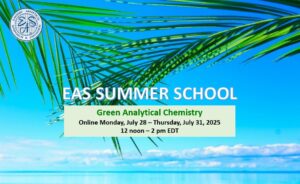Essentials of Modern HPLC/UHPLC I and II
E14-02, Two-Day Course
Sunday, November 16-Monday, November 17, 8:30am-5:00pm
Dr. Michael W. Dong, Genentech, S. San Francisco, CA
COURSE DESCRIPTION
This is a combination of two one-day courses: Essentials of Modern HPLC/UHPLC I: Fundamentals and Applications, and Essentials of Modern HPLC/UHPLC II: Operation, Troubleshooting and Method Development. A discount will be offered for the combined course over separately registering for the two one-day courses. See course descriptions for Essentials of Modern HPLC/UHPLC I: Fundamentals and Applications, and Essentials of Modern HPLC/UHPLC II: Operation, Troubleshooting and Method Development.
WHO SHOULD ATTEND
Analysts, scientists, researchers, and managers who want to get an updated introduction of modern HPLC practices, instrument operation, maintenance, troubleshooting, method development as well as recent advances including UHPLC. It is recommended that you have a good understanding of general chemistry. Some prior hands-on HPLC experience would be helpful.
TOPICS
| Day One | Day Two |
| 1. Introduction and Basic Concepts * Common corollaries * History, advantages, limitations, and modes * Retention time (tR), retention factor (k), separation factor (µ), column efficiency (N),column void volume (VM), and resolution (Rs) * Mobile phase factors (organic modifiers, pH, buffers), operating parameters (Flow, Gradient time (tG), column temperature (T)) and peak capacity (Pc) 2. HPLC Columns, Trends and Selection Guides * Column characteristics and types, packing characteristics (support type, particle size, pore size) and bonding chemistries * Trends of shorter and narrower columns packed with small particles, high-purity silica, novel bonding chemistries * van Deemter equation * Column selections guide * HILIC, monoliths, hybrids, sub-3, sub-2 µm and fused core columns 3. HPLC Instrumentation and Operating Principles * Solvent delivery system, injector, autosampler, detector (UV/Vis, photodiode array, fluorescence, refractive index, ELSD, CAD, conductivity, and mass spectrometer (MS), and data handling system * HPLC system calibration * Concepts and ramifications of dwell volume and instrumental bandwidth (extra-column bandbroadening) 4. Practical Applications of HPLC in Diversified Industries * An overview of HPLC applications in diversified industries supported with specific case studies * Pharmaceutical: drug discovery to quality control, assay, impurities, chiral separations and dissolution * Food: sugars, fats, organic acids, and additives * Environmental: US EPA methods, pesticides, and PAHs * Chemical: GPC, plastics, and ion-chromatography * Bioseparations and life sciences: proteins, peptides, amino acids, oligonucleotides, nuclei acids, and PCR products |
1. HPLC Operation, Maintenance and Troubleshooting * Mobile phase preparation * Best practice in HPLC operation * Guidelines for increasing HPLC precision and for trace analysis * Seven common “faux pas” in modern HPLC * Common HPLC maintenance procedures * Problem diagnosis and troubleshooting guide with case studies * Diagnosing and solving problems (pressure, baseline, peak, data performance) 2. HPLC Method Development and Validation * Tradition strategy for HPLC method development * 3-pronged template approach for efficient method development * Method prequalification and validation * Modern trends – software tools and automated systems * Case studies on developing ICH impurity testing of pharmaceuticals including some discussions on phase-appropriate method development concepts 3. Ultra High-Pressure LC 1 – Concepts, Perspectives, and Benefits * History and current status of UHPLC * Practical concepts and instrumental considerations * Benefits: very fast separation with good resolution, very high resolution of complex samples, facilitating rapid method development * Case studies (NCE, OTC, complex molecules and natural products) 4. Ultra High-Pressure LC 2 – Practice, Potential Issues and QC Implementation * Potential issues and operating nuances (viscous heating, system dispersion, compatibility to existing methods, injection precision and carryover, detector sensitivity and dwell volumes, and method transfer issues) * Case studies illustrating issues and myths, and how to mitigate potential pitfalls * How to get started and to transition from HPLC to UHPLC |
ABOUT THE INSTRUCTOR
Dr. Michael W. Dong is a Senior Scientist at Genentech, Small Molecule Drug Discovery, South San Francisco, CA. He is responsible for new technologies, automation and supporting multiple late-stage research projects in Small Molecule Analytical Chemistry and Quality Control, Small Molecule Pharmaceutical Sciences. He was formerly Research Director at Synomics Pharma, Research Fellow at Purdue Pharma, Senior Staff Scientist at Applied Biosystems / Perkin-Elmer, and section-head in Hoechst Celanese. He holds a Ph.D. in Analytical Chemistry from City University of New York, and a certificate in Biotechnology at U. California. Santa Cruz. He has conducted training courses at national meetings (ACS, Pittcon, EAS, HPLC) on HPLC in pharmaceutical analysis, HPLC method development, ultra-high-pressure LC, drug development process for scientists, and drug quality fundamentals. He has over 100 publications in chromatography and analytical chemistry. He authored a best-seller in chromatography – Modern HPLC for Practicing Scientists, Wiley, 2006 and co-edited Handbook of Pharmaceutical Analysis by HPLC, Elsevier/Academic Press, 2005. He is an editorial advisory board member of LCGC magazine and American Pharmaceutical Review.

